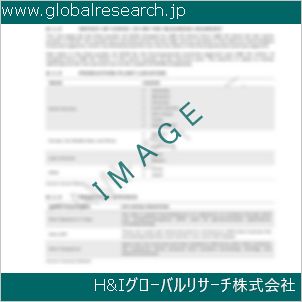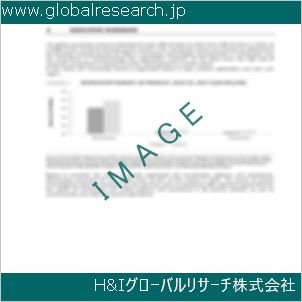Table of Contents
1 Industry Overview of Nonylalcohol
1.1 Definition and Specifications of Nonylalcohol
1.1.1 Definition of Nonylalcohol
1.1.2 Specifications of Nonylalcohol
1.2 Classification of Nonylalcohol
1.3 Applications of Nonylalcohol
1.3.1 Nuclear Application
1.3.2 Non-Nuclear Application
1.4 Industry Chain Structure of Nonylalcohol
1.5 Industry Overview and Major Regions Status of Nonylalcohol
1.5.1 Industry Overview of Nonylalcohol
1.5.2 Global Major Regions Status of Nonylalcohol
1.6 Industry Policy Analysis of Nonylalcohol
1.7 Industry News Analysis of Nonylalcohol
2 Manufacturing Cost Structure Analysis of Nonylalcohol
2.1 Raw Material Suppliers and Price Analysis of Nonylalcohol
2.2 Equipment Suppliers and Price Analysis of Nonylalcohol
2.3 Labor Cost Analysis of Nonylalcohol
2.4 Other Costs Analysis of Nonylalcohol
2.5 Manufacturing Cost Structure Analysis of Nonylalcohol
2.6 Manufacturing Process Analysis of Nonylalcohol
3 Technical Data and Manufacturing Plants Analysis of Nonylalcohol
3.1 Capacity and Commercial Production Date of Global Nonylalcohol Major Manufacturers in 2023
3.2 Manufacturing Plants Distribution of Global Nonylalcohol Major Manufacturers in 2023
3.3 R&D Status and Technology Source of Global Nonylalcohol Major Manufacturers in 2023
3.4 Raw Materials Sources Analysis of Global Nonylalcohol Major Manufacturers in 2023
4 Capacity, Production and Revenue Analysis of Nonylalcohol by Regions, Types and Manufacturers
4.1 Global Capacity, Production and Revenue of Nonylalcohol by Regions 2019-2024
4.2 Global and Major Regions Capacity, Production, Revenue and Growth Rate of Nonylalcohol 2019-2024
4.3 Global Capacity, Production and Revenue of Nonylalcohol by Types 2019-2024
4.4 Global Capacity, Production and Revenue of Nonylalcohol by Manufacturers 2019-2024
5 Price, Cost, Gross and Gross Margin Analysis of Nonylalcohol by Regions, Types and Manufacturers
5.1 Price, Cost, Gross and Gross Margin Analysis of Nonylalcohol by Regions 2019-2024
5.2 Price, Cost, Gross and Gross Margin Analysis of Nonylalcohol by Types 2019-2024
5.3 Price, Cost, Gross and Gross Margin Analysis of Nonylalcohol by Manufacturers 2019-2024
6 Consumption Volume, Consumption Value and Sale Price Analysis of Nonylalcohol by Regions, Types and Applications
6.1 Global Consumption Volume and Consumption Value of Nonylalcohol by Regions 2019-2024
6.2 Global and Major Regions Consumption Volume, Consumption Value and Growth Rate of Nonylalcohol 2019-2024
6.3 Global Consumption Volume and Consumption Value of Nonylalcohol by Types 2019-2024
6.4 Global Consumption Volume and Consumption Value of Nonylalcohol by Applications 2019-2024
6.5 Sale Price of Nonylalcohol by Regions 2019-2024
6.6 Sale Price of Nonylalcohol by Types 2019-2024
6.7 Sale Price of Nonylalcohol by Applications 2019-2024
6.8 Market Share Analysis of Nonylalcohol by Different Sale Price Levels
7 Supply, Import, Export and Consumption Analysis of Nonylalcohol
7.1 Supply, Consumption and Gap of Nonylalcohol 2019-2024
7.2 Global Capacity, Production, Price, Cost, Revenue, Supply, Import, Export and Consumption of Nonylalcohol 2019-2024
7.3 USA Capacity, Production, Price, Cost, Revenue, Supply, Import, Export and Consumption of Nonylalcohol 2019-2024
7.4 EU Capacity, Production, Price, Cost, Revenue, Supply, Import, Export and Consumption of Nonylalcohol 2019-2024
7.5 China Capacity, Production, Price, Cost, Revenue, Supply, Import, Export and Consumption of Nonylalcohol 2019-2024
7.6 Japan Capacity, Production, Price, Cost, Revenue, Supply, Import, Export and Consumption of Nonylalcohol 2019-2024
8 Major Manufacturers Analysis of Nonylalcohol
8.1 Manufacturer One
8.1.1 Company Profile
8.1.2 Product Picture and Specifications
8.1.2.1 Type I
8.1.2.2 Type II
8.1.2.3 Type III
8.1.3 Capacity, Production, Price, Cost, Gross and Revenue
8.1.4 Contact Information
8.2 Manufacturer Two
8.2.1 Company Profile
8.2.2 Product Picture and Specifications
8.2.2.1 Type I
8.2.2.2 Type II
8.2.2.3 Type III
8.2.3 Capacity, Production, Price, Cost, Gross and Revenue
8.2.4 Contact Information
8.3 Manufacturer Three
8.3.1 Company Profile
8.3.2 Product Picture and Specifications
8.3.2.1 Type I
8.3.2.2 Type II
8.3.2.3 Type III
8.3.3 Capacity, Production, Price, Cost, Gross and Revenue
8.3.4 Contact Information
8.4 Manufacturer Four
8.4.1 Company Profile
8.4.2 Product Picture and Specifications
8.4.2.1 Type I
8.4.2.2 Type II
8.4.2.3 Type III
8.4.3 Capacity, Production, Price, Cost, Gross and Revenue
8.4.4 Contact Information
8.5 Manufacturer Five
8.5.1 Company Profile
8.5.2 Product Picture and Specifications
8.5.2.1 Type I
8.5.2.2 Type II
8.5.2.3 Type III
8.5.3 Capacity, Production, Price, Cost, Gross and Revenue
8.5.4 Contact Information
…
9 Marketing Trader or Distributor Analysis of Nonylalcohol
9.1 Marketing Channels Status of Nonylalcohol
9.2 Traders or Distributors with Contact Information of Nonylalcohol by Regions
9.3 Ex-work Price, Channel Price and End Buyer Price Analysis of Nonylalcohol
9.4 Regional Import, Export and Trade Analysis of Nonylalcohol
10 Industry Chain Analysis of Nonylalcohol
10.1 Upstream Major Raw Materials Suppliers Analysis of Nonylalcohol
10.1.1 Major Raw Materials Suppliers with Contact Information Analysis of Nonylalcohol
10.1.2 Major Raw Materials Suppliers with Supply Volume Analysis of Nonylalcohol by Regions
10.2 Upstream Major Equipment Suppliers Analysis of Nonylalcohol
10.2.1 Major Equipment Suppliers with Contact Information Analysis of Nonylalcohol
10.2.2 Major Equipment Suppliers with Product Pictures Analysis of Nonylalcohol by Regions
10.3 Downstream Major Consumers Analysis of Nonylalcohol
10.3.1 Major Consumers with Contact Information Analysis of Nonylalcohol
10.3.2 Major Consumers with Consumption Volume Analysis of Nonylalcohol by Regions
10.4 Supply Chain Relationship Analysis of Nonylalcohol
11 Development Trend of Analysis of Nonylalcohol
11.1 Capacity, Production and Revenue Forecast of Nonylalcohol by Regions and Types
11.1.1 Global Capacity, Production and Revenue of Nonylalcohol by Regions 2024-2029
11.1.2 Global and Major Regions Capacity, Production, Revenue and Growth Rate of Nonylalcohol 2024-2029
11.1.3 Global Capacity, Production and Revenue of Nonylalcohol by Types 2024-2029
11.2 Consumption Volume and Consumption Value Forecast of Nonylalcohol by Regions, Types and Applications
11.2.1 Global Consumption Volume and Consumption Value of Nonylalcohol by Regions 2024-2029
11.2.2 Global and Major Regions Consumption Volume, Consumption Value and Growth Rate of Nonylalcohol 2024-2029
11.2.3 Global Consumption Volume and Consumption Value of Nonylalcohol by Types 2024-2029
11.2.4 Global Consumption Volume and Consumption Value of Nonylalcohol by Applications 2024-2029
11.3 Supply, Import, Export and Consumption Forecast of Nonylalcohol
11.3.1 Supply, Consumption and Gap of Nonylalcohol 2024-2029
11.3.2 Global Capacity, Production, Price, Cost, Revenue, Supply, Import, Export and Consumption of Nonylalcohol 2024-2029
11.3.3 USA Capacity, Production, Price, Cost, Revenue, Supply, Import, Export and Consumption of Nonylalcohol 2024-2029
11.3.4 EU Capacity, Production, Price, Cost, Revenue, Supply, Import, Export and Consumption of Nonylalcohol 2024-2029
11.3.5 China Capacity, Production, Price, Cost, Revenue, Supply, Import, Export and Consumption of Nonylalcohol 2024-2029
11.3.6 Japan Capacity, Production, Price, Cost, Revenue, Supply, Import, Export and Consumption of Nonylalcohol 2024-2029
12 New Project Investment Feasibility Analysis of Nonylalcohol
12.1 New Project SWOT Analysis of Nonylalcohol
12.2 New Project Investment Feasibility Analysis of Nonylalcohol
13 Conclusion of the Global Nonylalcohol (CAS 143-08-8) Industry 2024 Market Research Report
| ※参考情報 ノニルアルコールは、化学的に表現するとC9H20Oという分子式を持つ炭素鎖アルコールです。CAS番号は143-08-8で、多くの産業で使用されています。この化合物は、特に界面活性剤や溶剤としての利用が広がっていますが、他にも様々な用途があります。その特徴や種類について詳しく見ていきましょう。 まず、ノニルアルコールの基本的な特徴についてですが、これは主に長い炭素鎖を持つアルコールであり、その長さから「ノニル」という名称が付けられています。ノニルアルコールは、一般的に無色透明な液体であり、特有の香りがあります。この化合物は、水に対してはあまり溶解しませんが、有機溶媒にはよく溶ける性質を持っています。そのため、化学産業において重要な溶媒として機能します。 ノニルアルコールの種類には、主に2つの異性体が存在します。1つは直鎖状のノニルアルコールで、もう1つは分岐鎖状のノニルアルコールです。直鎖状のものは、その構造から特に界面活性剤としての特性が強いとされています。一方、分岐鎖状のものは、特定の用途に応じて異なる物理的性質を持つことがあります。 ノニルアルコールの用途は非常に広範囲にわたります。最も一般的な用途の一つは、界面活性剤の原料です。界面活性剤は、洗剤やクリーナーの成分として広く使われており、ノニルアルコールはこれらの製品において非常に重要な役割を果たしています。また、ノニルアルコールは、エマルジョンを安定させるためのエマルジョン剤としても使用されます。 さらに、ノニルアルコールは、プラスチックや塗料の添加剤としても使用されています。特に、ポリウレタンやアクリル樹脂製品において、流動性や光沢を向上させるために用いられます。このため、建築材や自動車部品など、さまざまな製品に関連する材料の製造にも利用されています。 また、化粧品産業でもノニルアルコールは重要な役割を果たしています。スキンケア製品やヘアケア製品において、感触を良くするための成分として添加されることが多いです。使用される際には、安全性が考慮されるため、規制に基づいて適切に管理されています。 関連技術としては、ノニルアルコールの製造プロセスが挙げられます。一般的にはパラフィンやオレフィンを出発原料とし、特定の触媒を用いて水素化反応を経て合成されます。これにより、高純度のノニルアルコールを取得することが可能です。最近では、環境への配慮から、天然由来の原料を利用した合成方法の研究も進められています。 環境に対する配慮も重要なテーマです。ノニルアルコールは、環境中での分解性が比較的低い物質であるため、その使用にあたっては影響評価が必要とされています。特に、界面活性剤として使用される場合には、水生生物への影響を考慮し、適切な使用量や廃棄方法が求められます。このように、持続可能な開発を目指す観点から、ノニルアルコールの使用に関する研究が進行中です。 最後に、ノニルアルコールに関連する規制について触れたいと思います。多くの国や地域で、化学物質に関する規制が強化される中、ノニルアルコールもその対象となることがあります。特に、化粧品や洗剤などの製品に使用される際には、消費者の健康や安全を守るための規制に従う必要があります。これにより、製品の品質や安全性が維持されることが期待されます。 以上のように、ノニルアルコールは化学産業をはじめ、さまざまな分野で重要な役割を果たしている化合物です。その特性や用途に応じて、今後も研究開発が進むことで、より安全かつ効果的な利用が期待されます。環境への影響を考慮しつつ、新しい技術や材料が開発されることにより、持続可能な社会の実現に貢献していくことが求められています。 |
❖ 免責事項 ❖
http://www.globalresearch.jp/disclaimer












